In the intricate realm of music production, a brilliantly composed piece can only impress when the quality of its recording is impeccable. Soundproofing, thus, holds paramount importance in the industry, aiding in capturing and delivering the most sonorous tunes. The science behind this imperatively demands attention to grasp its vital role in enhancing recording quality. From understanding the basics of how sound waves navigate and reverberate to realizing the innovations propelling soundproofing technology forward, this wide-ranging exploration promises to enlighten and instruct.
Understand the Fundamentals of Sound Science
The Symbiosis of Sound Science and Soundproofing: Sculpting the Silence in Music Recording
From the cascading symphonies of Mozart to the fiercely rhythmic beats of electronic music, the power music holds over our emotions is undeniable. However, much of the magic lies not just in the melodic harmonies and compelling lyrics but also in the silence – the spaces between the notes that amplify their resonance. This silence, or rather, the control over it, is meticulously crafted in music recording studios across the globe, enabled by an expert understanding of the science of sound and soundproofing techniques.
Sound, fundamentally, is the vibration of air molecules – a fascinating dance between pressure changes. Musically, we perceive these vibrations as the delightful irregular heartbeat of our favorite rock ballad or the haunting whisper of an eerie instrumental piece. Harnessing and manipulating these vibrations with precision is the foundation of modern soundproofing.
At the structural echelon, density and thickness of materials matter. A divine symphony of physics and engineering, soundproofing exploits how sound waves interact with matter. A higher mass per unit area dampens sound waves more effectively, causing them to weaken and ultimately eliminating unwanted noise. Hence, music studios often feature walls made of dense materials such as brick or concrete.
But not all soundproofing strategies are rigid. Some dance with the rhythm of flexibility and motion. This gives birth to decoupling, an ingenious technique to separate one side of a wall from another, altering soundwave paths and resulting in a reduction of sound transmission. Think of it as a winding mountain path compared to a straight, open highway. The journey for sound becomes more arduous, sapping the intensity and creating more controlled conditions for musical perfection.
Moreover, new sound science has led to advanced technology like sound absorbing foam. This material is a virtuoso at converting vibrating sound energy into heat energy that dissipates invisibly, leaving a pristine canvas for musical artistry.
Then there is diffusion – a technique that scatters sound waves, preventing any single frequency from dominating and causing significant interference. Utilizing variously sized and shaped blocks in a recording space, diffusion creates an even soundscape, keeping the narrative progression of music beautifully balanced and crisp.
Ventilation, too, plays its part in this sonorous masterpiece of soundproofing. Without proper ventilation, sound travels uncontrollably, causing maddening echoes and unwanted resonance. Attentive studio design ensures suitable stray sounds are tamed and expelled, providing blessed respite to recording artists and engineers.
In essence, understanding the science of sound allows for the crafting of cosmic cathedrals of music where every strum, beat, or vocal vibration can be captured in immaculate fidelity. Like an unseen conductor, soundproofing techniques guide each note to hit at the right time and place, shaping music as we know it.
As music continues to evolve in complexity and variety, so will the science that supports its creation. Every method that we use for soundproofing is a testament to the profound marriage of music and science, and a dedication to the pursuit of sonic perfection. Silence, it turns out, is not just the absence of sound; it’s the key to the world’s musical treasury.
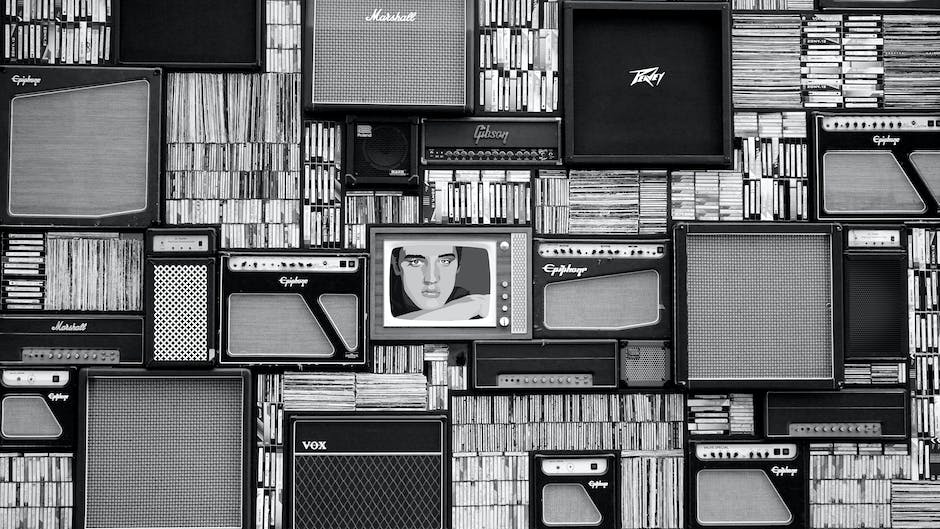
Importance of Soundproofing for Quality Recording
Music—enduring, transformative, and powerful. As a medium of expression, it evokes emotions and unites cultures, making it enigmatic and universally beloved. But the beauty we perceive audibly comprises several intricate processes and techniques, a crucial component of which is soundproofing. The incorporation of adequate soundproofing measures forms the backbone of high-caliber music tracks, underscoring the power of silent stages that magnify the melody’s impact.
Why, you may ask, is soundproofing pivotal for producing high-quality music tracks? Charting somewhat unfamiliar territory, let’s plunge into the sonic science that makes it all possible.
If music is a painting, silence forms its canvas. Eliminate unwanted noise, and the intricate melodies—each chord progression, each rhythmical pattern—emerge palpably. This, in essence, embodies the value of soundproofing. When recording, any external noise, whether a subtle hum of a machine or the audible chatter seeping in from the streets, can contaminate the sanctity of the melodic environment, marring the quality of the final product.
But silence itself isn’t monolithic—it needs to be tailored, fashioned to cradle specific sounds. That’s where different types of soundproof material come into play. Take mass-loaded vinyl, for instance. Its density and thickness are instrumental in damping sound vibrations and preventing sound leaks. Stacked layers of gypsum, other alloys, and insulating materials add to these efforts, creating an echoing void within which music comes forth in all its purity.
Decoupling is another technique integral to producing stellar music tracks. Decoupling involves creating a mechanical discontinuity in the structure—say, a gap between two walls—which helps in reducing sound transmission, effectively trapping the music within the recording space.
An equally important tool in the music producer’s arsenal is the use of sound-absorbing foam, primarily to convert sound energy into heat, thus diminishing the reflected sound within the room. Close your eyes and listen to a song—can you hear the scale of space being deftly manipulated? You’re hearing the uncanny work of diffusion at play, a technique that ensures an even acoustic landscape, preventing overwhelming clumps of sound and providing every note its space to breathe.
But amid this careful orchestration of silence, don’t forget the factor of ventilation—in many ways, it’s equally vital in controlling sound travel and unwanted resonance, offering a medium for excess sound to escape and maintain sound levels manageable.
Understanding the science of sound that forms the bedrock of creating divine music is, in many ways, an art form. Continuing innovations in music and soundproofing techniques have opened new avenues for rethinking this dimension of music production, advancing genres, and creating experiential harmonic landscapes.
To conclude, soundproofing isn’t just about keeping noises out; it’s a craft involving sound sculpting and space manipulation. When perfected, it can harness the power of the sound to bring music to life, ensuring every crescendo, every pitch, every rhythm, and every melody stands out, untainted by unwanted noise and echo. Audio purity and crisp reproduction of sound lead to high-quality music tracks—thus, singing the song of soundproofing!
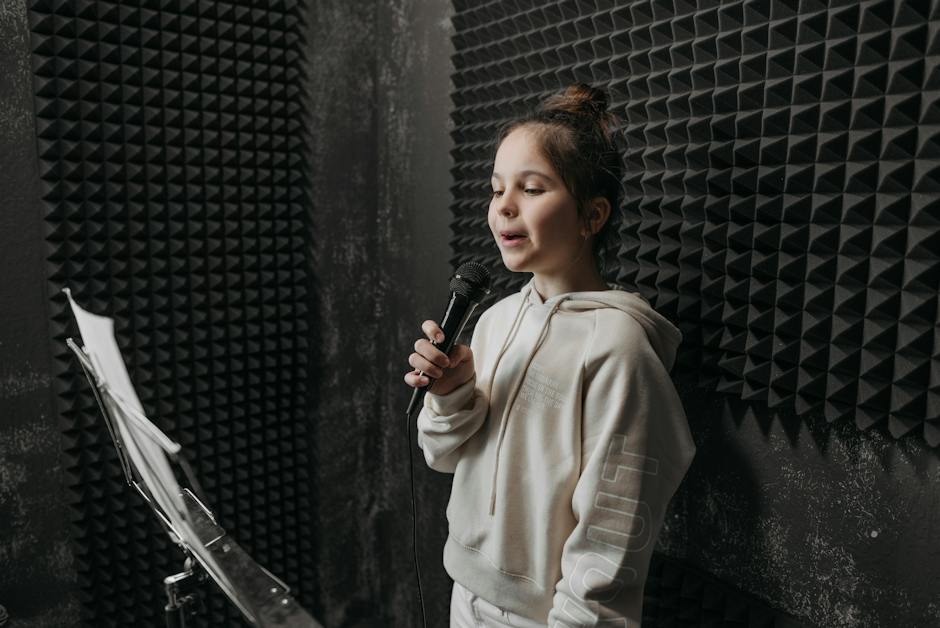
The Art and Technique of Soundproofing
Bridging the Gap between Artistry and Acoustics: The Invisible Hands of Soundproofing
A dance of decibels takes place in the silent corners of recording studios, where the beating heart of music is given life. Whether it is a soulful ballad or a high-octane rock anthem, each note being recorded is not just an emanation of sound, but a symphony of science. This is the domain of soundproofing.
One of the many complexities of recording studios is the establishment of sound isolation. Beyond cancelling unwanted noise, sound isolation shapes and gives form to the ambiances that uphold the spirit of a piece. Similarly to how a marble sculpture needs air around it to let its beauty be seen, a musical work needs silence to let its beauty be heard.
Creating spaces of controlled silence depends on the method named isolation. Practically, isolation means creating barriers for sound, using solid, dense materials. Not everything rests on the solidity of the barrier, though. Any small holes or gaps in the construction could creatively be dubbed as “sonic highways”, serving as unintended passageways for sound waves to travel through. Therefore, the sealing details are crucial. Innovative silent doors, windows, and even ceiling tiles are incorporated to prevent those surprising sonic leaks.
Even the floor matters. Raised floors and floating floors can be utilized to create an added barrier, particularly beneficial to keep the lower frequency sounds, like a pulsating bass line or a powerful kick drum, in check.
It’s not only external sound we seek to control. Internally reflected sound, also known as reverberation, should also be managed to avoid an echoic recording. This is where bass traps, absorbers that significantly reduce the reflections of low-frequency sound, come into play. By placing them strategically around the corners of the room where most reflected sound is likely to pool, they ensure a space conducive for purer, clearer sound.
Among the buzz of studio lights and the web of cables, science and music continue their unceasing dance. However, we can’t forget ventilation. Operating equipment and inspired musicians both tend to generate heat. Conventional ventilation, though, is often not soundproof. Ducts end up being the perfect channel for sound waves, forming the opposite of the desired silence. Custom solutions, like sound baffling air vents, have to be employed to ensure comfort doesn’t compromise acoustics.
While all those technicalities might seem overwhelming, remember that they’re just tools in the hands of the ultimate goal – creating music that can move, heal and inspire. Silence and sound should dance together, creating the rhythm of the music we love. The right soundproofing technique will accurately capture the fullness of an artist’s expression, from the roaring crescendos to the whispering solos. It lets the music speak for itself, without the hindrance of unintended sonic intrusions. An appropriately soundproofed studio would not merely contain bisounds, but it would transform itself into the conductor of a harmonious performance.
Soundproofing is an essential partner in the journey to create music that transcends the confines of the studio and ventures into the hearts and souls of listeners. It’s an uncelebrated, yet integral player of the symphony – the silent partner to the art of music. Exceptional soundproofing has the power to elevate a musical tale from simply being heard to truly being felt. It is, in essence, the invisible maestro commanding the symphony of sound and silence.
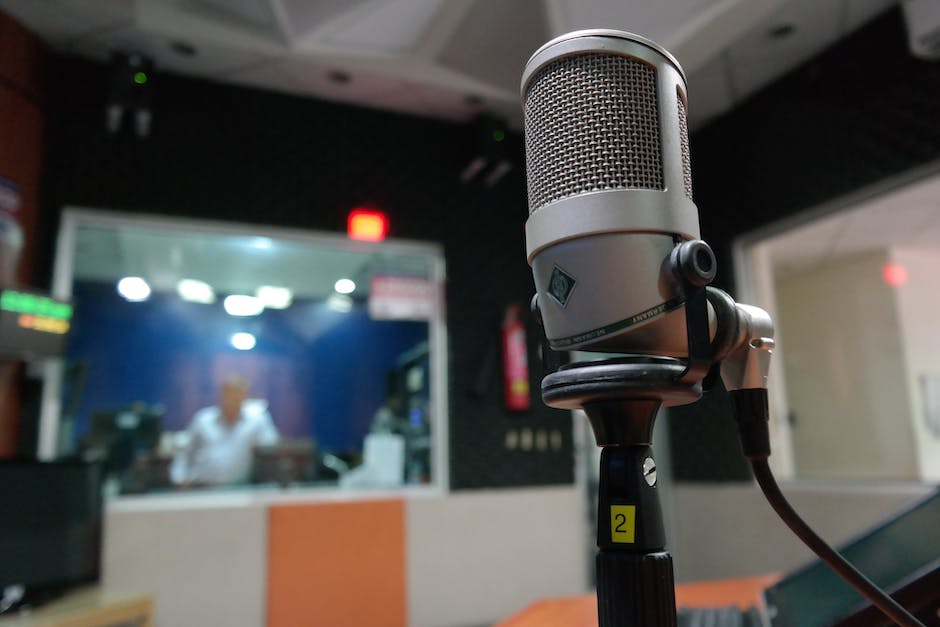
Innovations and Advances in Soundproofing
Delving deeper into the theatrical stage of soundproofing, the exploration has become a virtual symphony of innovation and technological advancements. On this crucible of scientific inquiry and musical passion, progress strides in even more exciting tempo, bringing a medley of new soundproofing techniques and materials to the limelight. Truly, in this realm where silence and music entwine in a harmonious dance, every decibel counts, each note rings vital.
Emerging on the forefront of soundproofing, viscoelastic materials have made a grand entrance with their fascinating properties. These marvels have the unique ability to introduce damping into the system, which absorbs and dissipates the kinetic energy of soundwaves, and reduces their magnitude. The science is akin to a thrilling crescendo of a melody; a booming sound transformed into a whispering echo until it’s barely perceptible, creating the perfect blank slate for pure musical expression.
Taking a bow alongside viscoelastic marvels are the mass-loaded vinyl barriers, nonpareil in their class. These high-density, thin materials are pliable, making them supremely versatile and perfect for wrapping around pipes or cables, contributing to a studio’s overall sound neutrality. Think of them as the consistent rhythm section, unobtrusive yet integral, providing the required silent backdrop where the musical notes can harmoniously take center stage.
Then there’s transformational green glue, or viscoelastic adhesive, a genius concoction that converts sound vibrations into heat energy. Applied between two layers of standard construction material, it performs an architectural ballet, helping to reduce noise transmissions significantly. Like a master conductor, green glue orchestrates a serene environment, suppressing unwanted noise and letting the true music shine through.
Resonance-reducing technologies have also been making waves in the soundproofing sphere. There’s an increase in the use of devices like the TMD (tuned mass damper), engineered to shift resonant frequencies and decrease vibration. Imagine a percussionist playing the perfect rhythm to counterbalance and control the resonances, bringing balance and harmony to the sound spectrum.
On a larger scale, the advent of digital modeling programs has revolutionized the field too. From the conceptual stage to the final design of a recording space, acoustic designers harness physics-based simulations to predict the performance of different soundproofing treatments. This technological breakthrough is like having a virtuoso composer arranging each element, ensuring every note will be played perfectly.
At the crossroads of art and science, soundproofing has become a dynamic arena in its own right. Each material, each technique, resonates with the universal language of music, serving passionate artists and mindful audiophiles alike. In the evolving symphony of soundproofing, the journey to orchestrate the perfect harmony between sound and silence reverberates stronger than ever. Indeed, in this modern sonata of silence, music finds its purest expression. True to its ethereal essence, music soothes, electrifies, and unifies—undisturbed.
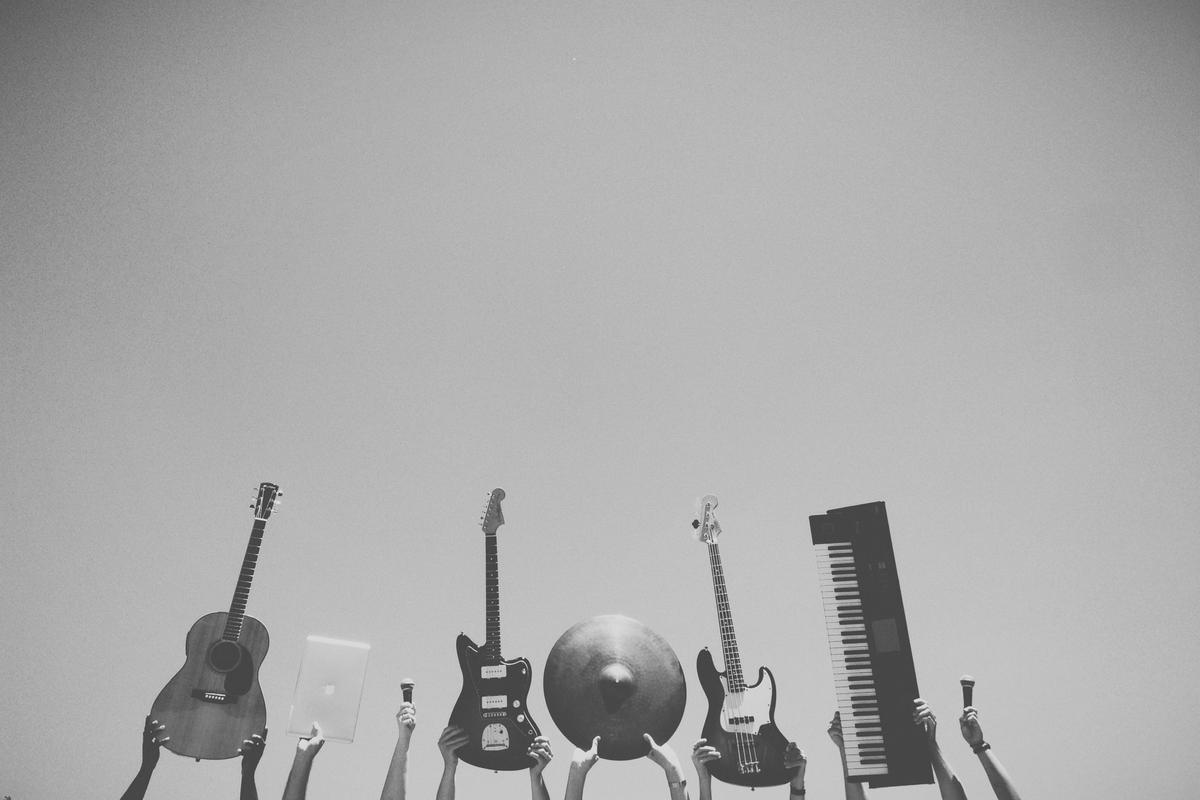
Photo by seemoris on Unsplash
Delving into the world of soundproofing has proffered insights into its formative science, the monumental difference it makes in producing quality recordings, advanced techniques deployed, and the novel trends that are redefining its future. While soundproofing may seem a mundane, technical aspect, its profound impact on the way we experience music stands undisputed. As the industry continues to evolve, being informed of these trends and techniques will only enrich and elevate the quality of audio we consume. Thus, the sounds we hear will continue to captivate, inspire and move us in ways only well-recorded music can.
The captivating journey of sound recording is a winding tale, stretching from plush studio booths to vast nocturnal landscapes that whisper monologues of music. This audacious exploration of acoustic confines, navigated by stalwart artists and sound engineers alike, has resulted in an evolution of recording environments each with its unique sonic footprint. From symphonic echoes resonating within cathedral walls to the intimate fabric of homemade studios, this plunge in unconventional spaces has extended the boundaries of audio recording far beyond carpeted studios. As we embark on this enlightening journey that intertwines aesthetics, acoustics, technology, and emotions, one not only unfolds the defining role these settings play in crafting an artist’s voice but also the consequent ripple they create in the ever-expansive sonic landscape.
The evolution of recording environments
In the grand symphony of life, music stands as a unifying melody, threading together diverse emotions, cultures, and ideologies into a sound tapestry of human connection. From the softest whispers of a lovers’ lullaby to the vibrant riffs of a crowd-saturated festival, music—beautiful, transformative, and immersive—is an indispensable part of our existence. Each note, each chord, pulls out feelings buried deep within our subconscious, giving life to expressions unspoken. It is, therefore, a captivating journey to explore the metamorphosis of music production environments and their role in shaping music as we understand it today.
In the embryonic stage of sound recording, the world didn’t come privy to isolated studios. Sturdy walls echoed with sounds, as musicians huddled in vast rooms, halls, and parlors. This gave music a certain reverberating ambiance that became integral to its identity. Early pioneers like Thomas Edison and Emile Berliner struggled with the lack of volume control and enduring external noises. Yet, their cylindrical phonographs and gramophone discs chronicled the nascence of music recording, setting its course for the journey ahead.
Moving swiftly into the Jazz Age of the 1920s, the concept of dedicated recording studios began to cement. With the advent of microphones and electronic amplification systems, musicians got access to a powerful set of tools to control volume and eliminate unwanted noise. These intimate recording spaces played host to iconic melodies, fostering the creation of Louis Armstrong’s smoky trumpet solos or the sultry crooning of Billie Holiday.
As bursts of psychedelic colors began to paint the canvas of the 1960s, recording studios manifested as hubs of creative explosions. Where Pink Floyd explored layers of psychedelic soundscapes, the Beatles were busy pioneering multi-tracked magic, courtesy of the four-track tape recorders. The famous Abbey Road Studios or Berry Gordy’s Hitsville USA in Detroit were not merely buildings, but thriving ecosystems that pushed sound engineering and music production to higher echelons.
Fast-forward to the digital age, recording environments irreversibly changed with the laptop’s arrival, turning any ambient space into a potential studio. While Bon Iver secluded himself in a remote cabin in Wisconsin to give birth to ‘For Emma, Forever Ago,’ Burial unearthed urban soundscapes in the confines of his South London apartment for ‘Untrue.’ These instances are testaments to technology’s empowering prowess, democratizing music production’s barriers.
Recording environments have also inspired a specific flavor of musical performance known as ‘field recording.’ Letting free the melody beyond the studio walls, musicians have sought experience and inspiration in the wild, resonating corners of the world. From Brian Eno recording the ambient sounds of an airport to capture its unique musicality to Alan Lomax’s folk music documentation across the rural United States—they offer a raw, transformative, and immersive audio experience.
Surrounded by the sonic aura of vast music genres, it’s apparent that recording environments, born out of necessity, have evolved into creative edifices, inspiring unique productions. They are living testaments to music’s pulsating evolution, celebrating its emotive versatility and boundary-defying spirit. Each era, each space, every corner housing an instrument has bolstered the choruses of creativity and ingenuity, shaping the sounds that resonate within our hearts and reverberate across our shared human existence.

Photo by laurar1vera on Unsplash
Choosing the unconventional recording space
Venturing beyond the confines of standard recording studios has always held allure for those musical maestros daring to innovate. The allure of non-traditional recording settings — from old warehouses to majestic cathedrals — presents the alternative of experiencing untamed acoustics’ raw nuances. What, though, persuades an artiste to venture so far from the familiar?
The hunt for unparalleled originality drives many to unconventional recording spaces. The guarantee of a sound distinct from the glossy precision of a typical studio is priceless. Stripped of sophisticated sound systems, these novel settings unfurl an unprocessed charm that paints an audio canvas rich with authenticity.
The capacity to harness natural echoes, unique reverberations, and spontaneous sound events occurring spontaneously thickens the texture of the final musical piece. An old factory’s metallic resonance, a cathedral’s ethereal echoes, or the eerie quiet of a deserted Pripyat building, each of these yawning spaces stamps its signature on the sound, creating unforgettable audioscapes.
Insatiable ingenuity shapes the artist’s choice too. Non-traditional environments offer a challenging ground for experimentation. Without the safety net of engineered acoustics, artistes and their production teams dive deep into exploration — adapting their techniques, discovering new sound dynamics, and ultimately stretching their creative elasticity.
Playing with restored spaces forms another magnet. The opportunity to infuse fresh life into forgotten infrastructures and echo history’s whispers through music makes such ventures irresistible. These spaces reverberate with narratives — each etched in their fabric, which when soaked in music, compound the final sound’s narrative depth.
Occasionally, the search for scaled-down recording costs leads to these atypical settings. Unlike heavily decked-out studios, repurposed spaces do away with hefty bills. So, while the same might necessitate peculiar adjustments from both the artist and their crew, the monetary trade-off can be quite enticing.
The decision, however, is not all serendipitous exploration and pocket-friendly choices. The intimacy these spaces offer plays a key role too. Cocooned from the bustle of the outside world, these places nurture a safe haven that lets an artiste unwind and unfurl. This inherently seduces trust into the musician-space equation, allowing the music to emanate from a raw, vulnerable place.
Unusual recording environments are not just about the final sound or cost, though. They’re also about the journey. The underlying sense of adventure, of stepping into the unknown, becomes part of the music-making process. The spirit of these places, their quirks and peculiarities, weaves into the fabric of the music — not just influencing the sound, but becoming part of the folklore tied to the album or track.
It’s a symphony of several factors — in seeking distinct, organic sounds, stripping down excessive costs, locating narrative depth, fostering intimacy, and embracing the thrill of the unknown, we uncover the reason artistes opt for the unorthodox. These spaces, in turn, cradle their creativity, mirroring the artist’s voice, etching their echoes in the structure’s very fabric and the music produced therein. The result? A piece of music steeped in its own narrative, layered with personal expressions and resonance that reach out to listeners, binding them in a shared experience, a unified musical journey.

The technicalities of capturing sound outside the studio
Despite the allure and originality offered by unconventional recording environments, they come with their unique set of challenges and technical considerations.
Each non-traditional recording space holds a distinctive tonal palette, courtesy of the physical and architectural elements inherent to the location. Auditory idiosyncrasies – the humming of the wind, the rustling of tree leaves, or the echoing echo in an abandoned warehouse – can lend an authentic feel but laud the process with extraneous noise that can distort the desired sound.
The unpredictable acoustics of atypical recording locations pose the foremost challenge. Traditional studio environments are designed to provide control over sound, whereas a barn, a church, or an open-air setup won’t necessarily be acoustically balanced, leading to potential echoes or undesired noise floor. It tests the resourcefulness and flexibility of the artist and the recording engineer, requiring them to harness these naturally occurring acoustics to enrich the music rather than overshadow it.
The esoteric charm of recording music in the heart of a rainforest or atop a mountain can be enthralling. Nevertheless, these settings open a Pandora’s box of technical hiccups. Wires could trip, equipment could malfunction amidst the harsh elements, and the lack of a controlled environment makes it challenging to achieve a consistent sound across multiple sessions.
Power supply can be another stumbling block when working in isolated, remote locales far from the grid. Portable generators could be an answer; however, they bring their own noise pollution and may produce electrical noise that interferes with the recording equipment.
Recording music in unconventional spaces isn’t a straightforward plug-and-play affair. It demands premeditative planning, high-quality portable gear adapted for location recordings, and a skilled team that can adapt and improvise. The equipment needs to be more rugged, resilient, and compact for it to withstand the rigors of an unconventional environment.
Delving into the realm of unconventional music production also requires a seismic shift in post-production strategies. The uniqueness of each track can make the process of mixing several tracks recorded in different locations a complex jigsaw puzzle requiring profuse patience and expertise to piece together harmoniously.
Finally, the factor of cost is something that cannot be ignored. The expenses associated with transporting crew and equipment, obtaining permissions, and accommodating additional production needs can significantly inflate the budget compared to a controlled studio setup.
The DNA of unconventional recording environments undoubtedly presents a unique melange of technical hurdles to overcome. However, the end prize of a song soaked in raw authenticity, carrying the imprint of a unique location, can far outweigh the challenges, fueling the desire of music pioneers to foray forward, undeterred. For them, these trials are but stepping stones elevating their music to uncharted territories, knitting a sonic tapestry as diverse as the locations that housed its creation – a testament to the limitless power and possibilities of music.
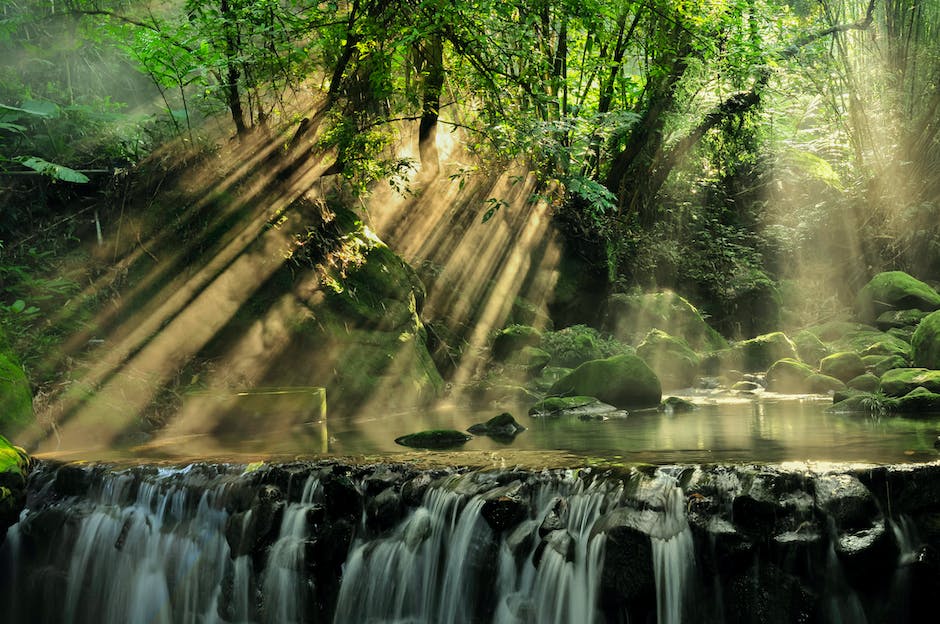
The socio-cultural impact of recording in unconventional spaces
Experiencing the Influence: The Ripple Effect of Unorthodox Recording Environments
In the boundless realm of music, the ripple effect of recording in unconventional spaces echoes, profoundly shifting the course of the industry and audience sentiment.
Thriving on unpredictability, these recordings have catalyzed the rise of an updated audio aesthetic, a phantom character intertwined with the music. Rough edges, the clash of urban noise, the tranquility of deserted landscapes all reflect in the music, akin to beautiful melodic impurities. This rawness connects with audiences on a human level, reminding them of music’s heritage – a primal, organic beauty – and has compelled listeners to rally around this authenticity.
In tandem with the consumer embrace, the industry has also been transformed. Producers are increasingly open to unconventional recording spaces. Conventionally obscure genre artists find themselves in the spotlight, seamlessly blending the natural and the synthetic. This experimentation has given birth to a new path in the industry, one less dependent on million-dollar studios and more on embracing the art’s rudimentary nature.
Landmark albums such as Bon Iver’s ‘For Emma, Forever Ago’ and Fleet Foxes’ ‘Helplessness Blues’ – both partially developed in isolation and outside the confines of traditional studios – speak volumes. Their commercially and critically acclaimed works have validated these recording methods, achieving a resonance that is both profound and pervasive.
Moreover, the amalgamation of varying techniques – from utilizing the hushed ambience of a forest to the industrial resonance of a dilapidated building – paints an entirely different sonic picture. That novel texture, denied by the muted sterility of a traditional studio, whispers tales of journey, emotion and discovery.
Additionally, such brave ventures into unknown territories have fostered an unexpected benefit: the education of listeners. In most cases, audiences are being unintentionally enlightened about the diverse layers of sound and instrumental utilization. This, in turn, enhances their discerning palette, further driving demand for original and experimental sounds.
Despite the multitude of challenges faced while recording in diversified environments – be it technical hiccups, power supply hassles, unpredictable acoustic behavior or extraneous disturbances – these daring ventures have yielded overwhelming rewards. The distinctive harvest of tones, an augmented audience appreciation, and a Scriptural sense of authenticity give diversified recording approaches an undeniable allure.
In conclusion, the swing towards unconventional recording spaces is not just a whim or passing trend, but a necessary evolution born out of an insatiable curiosity for musical exploration. This bold, innovative move has not only energized the industry but also fostered a deeper bond with listeners, fostering new avenues of creativity and harnessing the boundless power of music in an earnest endeavor to connect, heal, and elevate.

Drawing aside the acoustically treated curtains of studios and stepping into unconventional spaces for recording has indeed stirred a significant socio-cultural impact. It has influenced the way music is marketed, created, and experienced. From the electronically amplified echoes within urban warehouses to the rustling serenades of coastal grief, each environment assumes a transcendent role in curating immersive experiences and cultivating dedicated communities. The resonating baritone of blues in the heart of the city or the lonesome lull of folk on the rugged coastlines thus becomes a testament to the power of unconventional recording spaces in shaping our collective musical panorama. It’s more than just audible aesthetics; it’s an empowering platform where artists, genres, and listeners unite in a silent pledge, bound by the unspoken magic of music.
The artistry of music extends far beyond the moment a note is struck or a melody is sung. From the ambience of a recorded song to the thumping sound of a club track, much of what we hear is the result of arduous post-production. Often overlooked, post-production is the process that occurs after the initial music recording, effectively the nexus where creativity meets technology. This intricate journey, beginning with raw audio elements and culminating in a polished final product, encompasses two crucial elements: mixing and mastering.
Understanding the Post-production Process
Music, the sweet intoxicant of the soul, has long been the refuge of dreamers, the sanctuary of the lost, and the dance floor of the ecstatic. It is a universe encapsulated within the brief silences between notes. And like a universe, the creation of a musical piece requires planets to align, stardust to collect and galaxies to collide. What’s often overlooked, however, is the unsung hero known as post-production that transforms these raw elements into a celestial symphony.
The post-production process in music is the final phase in the recording process where the initial blueprint of the song is sculpted into the final masterpiece on your turntable or streaming platform. It is where the raw, sometimes cacophonous, collection of sounds are harmoniously woven into one cohesive melody-deserving of our attention, our tears, our laughter, and our utmost admiration.
This intricate process typically begins with editing, which includes the transcription of different tracks, refining rhythm and pitch, and eliminating any unwanted noise. It’s here that the incessant banging of surrender against an analog drum gives way to the rhythmic pulsation of an awe-inspiring beat. A flat note no longer languishes in its mediocrity but becomes an integral part of a magnificent chorus.
This then seamlessly transgresses into the domain of mixing. The mixing engineer, the unseen Maestro, begins the task of playing with each sound’s dynamics. Every sigh, every pluck, every strum, and keystroke is meticulously scrutinized for volume, balance, and pan position, ensuring an equilibrium of sound harmony. Like a master painter mixing their palette, the mixing engineer fuses together disparate sounds to create a sonic landscape that caresses the very contours of our souls.
And then, finally, there is the mastering. Often mystified as an arcane art within the industry, it is, in its core essence, the final romantic refinement of the record before it takes its first leap into the world. Utilizing equalization and compression, the mastering engineer carefully wraps the audience in a blanket of sound where no instrument fights for attention and every nuance is coddled into a universally consumable package.
Music post-production is the uncredited catalyst taking a listener from the realms of mundane reality, lifting them gently into the cosmic weave of the artist’s soundscape. It’s an intricate ballet conducted within the shadows, demanding both technical prowess and artful intuition.
Infusing magic into every note, the post-production process in music simultaneously serves as a translator, a custodian, and an artist. It ensures the raw emotion, the subtle details, and the grand crescendo intended by the creator reaches the listener in a form as beautiful, complex, and diverse as the multifaceted orb of human experience itself, unblemished, cherished and revered – a testament to the enduring power of music. Celebrate it, for without it, the world would be left listening to an orchestra of unfinished symphonies.
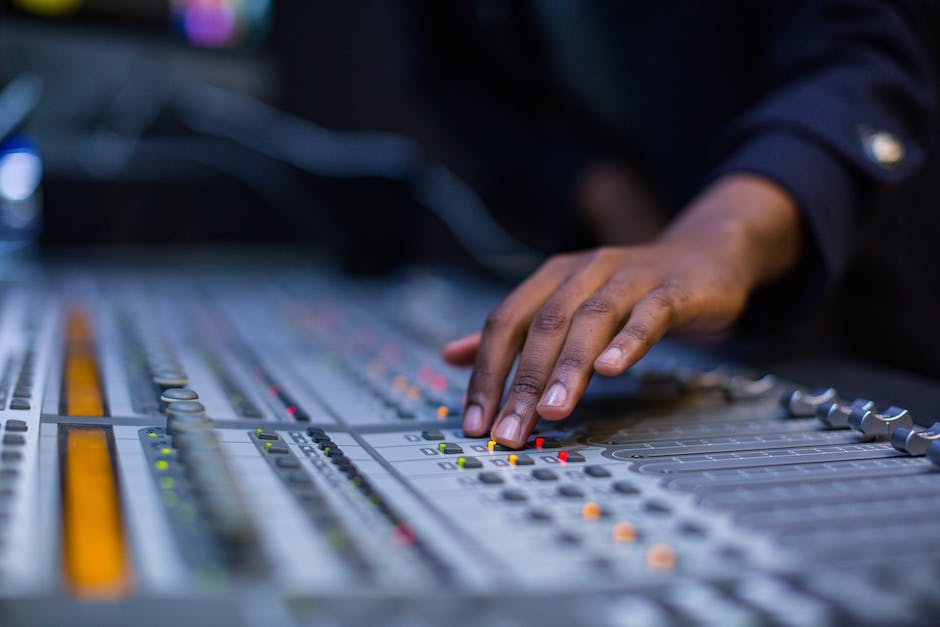
The Art and Science of Mixing
Once the recording buttons dim and flicker off, the stage is set for the unsung heroes of music – mix engineers. Threaded deeply within the tapestry of music creation, the wheels of mixing start to spin in motion, unsheathing the essence of the song, and shaping it into a magnum opus.
The melody that clasps our ears, the rhythm that makes our hearts sway, the timbre summoning our emotions – all are weaved into a harmonious ensemble during a process known as ‘Mixing’. Embarking on a journey to understand the phenomenon of mixing, it’s necessary to first grasp its undiluted definition: essentially, it is the culmination of various sounds, elements, and layers, melded into a single track, balances in texture and intricacies upheld. Each chime and rhythm, every harmony and dissonance, is collectively kneaded into a sonic narrative.
Step within the realm of a mix engineer and one would discover the elaborate canvas of instruments, elements, frequencies, and levels, awaiting intricate brush strokes. Here, contrasts are embraced – the whispers are enfolded within roars and the shadows are pressed against the light. This intricate science of sound manipulation fashions an auditory paradise where the subliminal conversations between instruments are fine-tuned, vocal melodies are piqued, and the unique nuances, sometimes even the ‘flaws’, are laid bare and embraced.
Each element in a track holds its own charm, yet also forms part of a grand symphony. This dynamic dance between each strum, beat, and note battles for space within the finite frequency spectrum. The art of mixing forges a harmonious equilibrium, preventing any drowning out of other elements or overpowering the collective sonic energy. From the subtle bass notes nudging gently in the background to the crisp chorus perched atop the musical structure, each element is granted its rightful place.
So what does this equilibrium translate into for the listener? The answer is all-around – sheer bliss, rich in depth and intensity. The listeners are suddenly transported onto a multidimensional excursion overflowing with fleeting notes, cascading melodies, and rich textural intricacies. Listening to a finely mixed track is akin to draping the ears with an auditory velvet, coursing with rhythmic undulations and pulsating sensations.
Yet mixing does not merely act as the midwife of music; it transcends – becoming a language that communicates the raw emotions smeared within a song to a listener. Every knob-twist, every pan or fade, relays the artist’s delicate whispers of love, the rallied cries of revolt, or the heartfelt laments of despair. A muffled note, the echo of a drumbeat, or even the silence between notes, all thanks to the intricate art of mixing, contain within them the power to evoke memories, trigger a sea of emotions, and create an intimate bond between the artist and the listener.
In the end, it would be an egregious mistake to underestimate the role of mixing in the realms of music. It is not just a cogwheel in the machinery, but the lifeblood that marries the theory and practice of music into a divine syncopation. Bridging the gap between the first recorded note and the final mastered track, mixing is the golden thread that binds the musical mosaic together, enhancing and emboldening every color, every vibration. So when the needle drops, listen closer, and appreciate the age-old craft of mixing, a truly underappreciated cornerstone of music’s enchanting allure.
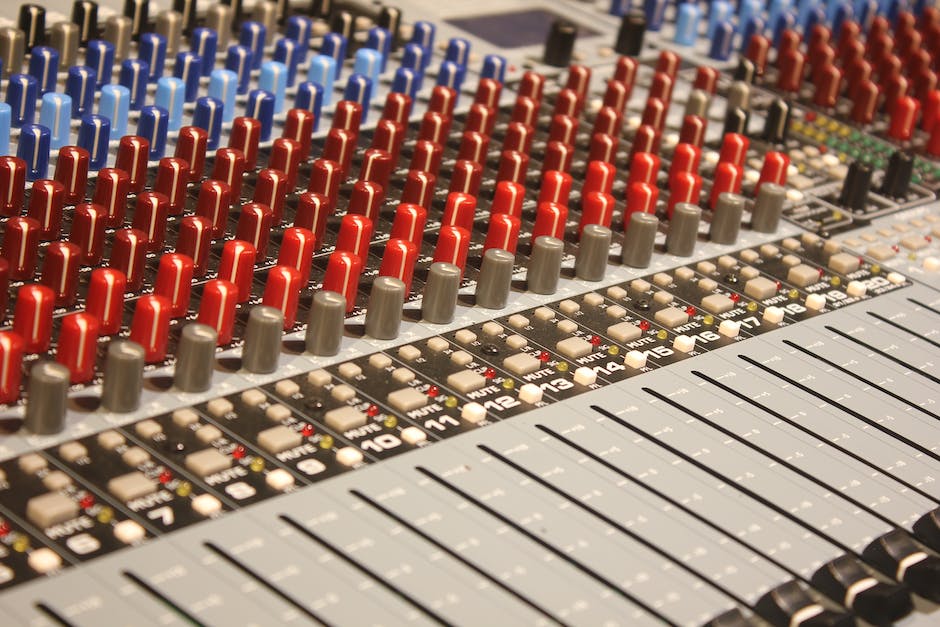
Mastering Demystified
Drilling down deeper into the world of post-production, let’s journey into the realm of mastering, an indispensable procedure that adds the final polish to a mixed track and prepares it for ultimate distribution. Often referred to as the “final checkpoint” in music production, mastering serves as the bridge that enhances the listener’s experience and aligns it with the artist’s original vision.
Mastering encompasses two core functions – to engineer uniformity and to optimize playability across all systems and formats. Perhaps one could liken mastering to the nuancing brushstrokes of an artist completing a masterpiece: the vision is already crafted through mixing, but the strokes unify the concept, refining each and every intricate detail to saturation. Taking a mixed track through the mastering process ensures it has a balanced frequency response, mitigating any extreme spikes or troughs that could compromise the intended auditory experience.
In the hands of a mastering engineer who listens with an astute and experienced ear, an equalizer, a compressor, a limiter and other specialized tools are wielded like finely honed instruments, perfecting loudness and dynamics, fine-tuning details, reducing any existing noise and distortion, and ensuring seamless track transitions. Mastering can breathe life into a relatively flat mix, creating depth, vibrancy, and resonance that wasn’t present before.
In addition, this intricate process extends to formatting, preparing audio tracks for various playback formats, from streaming platforms to vinyl pressings, ensuring every note resonates correctly regardless of playback source. In this digital age, with listeners consuming music on a plethora of platforms, the mastering process becomes even more crucial to convey the music’s essence across all listening experiences.
Furthermore, mastering engineers have profound understanding and knowledge of specific sonic footprints and nuances of different music genres, allowing them to make calculated decisions that cater to the genre’s specific demands. A jazz track may need a different mastering touch from a hip-hop beat. This genre-specified mastering approach results in a sound that feels at home with other tracks within the same genre.
Mastering, therefore, is a potent process that takes a track from being great to truly splendid. It is the phase where science and art merge even more intricately, and the track is meticulously refined and painted with a final lustre. An undeniable force in the post-production process, mastering is truly the arbiter of sound that stands at the crossroads of creativity and technology. A well-mastered track has the power to immerse, to tug at heartstrings, to compel foot-tapping or soulful reflections, and to echo powerfully in human hearts long after the last note has faded.
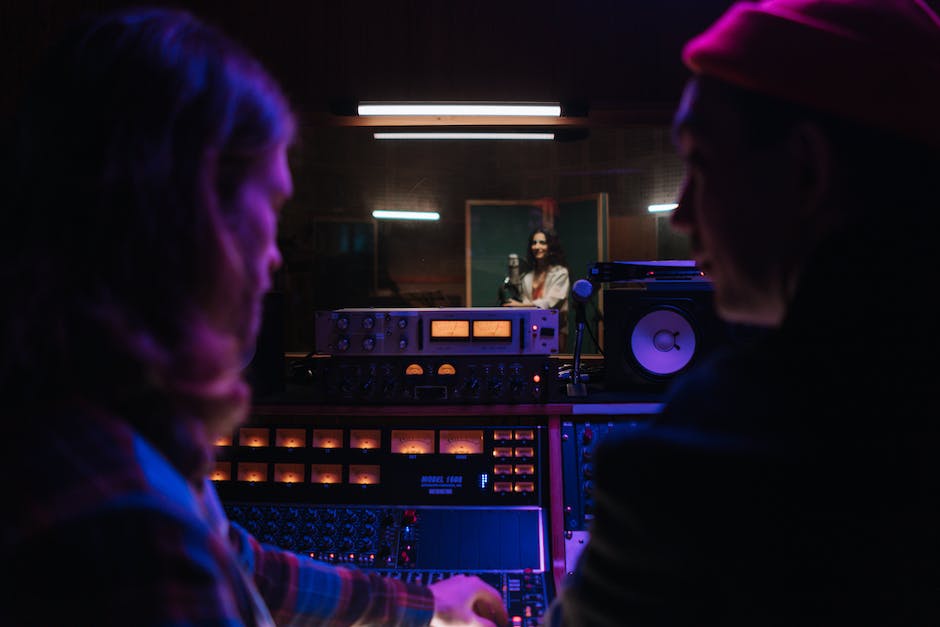
The Impact of Quality Post-production
Delving deeper into the realm of music post-production, it’s impossible to miss the magnificence and magic that happens during the mastering process. If the mixing phase is akin to sculpting a statue, then mastering is giving that statue its final polish, to make it shine in all of its grandeur. Every intricate detail is precisely calibrated and amplified, ensuring a coherent, distinct sound that echoes the musical vision intended. Sweating these microscopic details plays a pivotal role in revealing the heart of incredible music, pulling listeners into the universe crafted within the sonority of every note and beat.
No matter how fervently we love the raw, unfiltered sound of live music, the experience afforded by well-mastered tracks on a quality sound system is unparalleled. It provides a sonic journey where each detail reaches the ears in unsurpassed fidelity. This incredibly high-standard listening experience heightens the emotional connection between listener and artist, making music a potent force that bridges hearts and souls across disparate distances.
The definition of music, for the listener, extends beyond merely the harmonious combination of melody, rhythm, and lyrics. It’s an immersion, an adventure in sound and emotion. In that context, high-quality post-production, especially mastering, ensures the listener gets to experience the full spectrum of this adventure. It’s a tangible invitation to step into an aural landscape painted by the artist, bolstered by the invisible, yet indispensable hands of the mastering engineer.
Where the custom of the music industry once allowed for high degrees of variance in playback, today’s digitally-dominant era requires standardized output across diverse platforms. From vinyl records to streaming platforms; the mastering process ensures that an artist’s music retains its soul, no matter where it’s played. This continuity is critical to maintaining the artistic integrity of the music and delivering a uniformly great listening experience to the audience.
Mastering doesn’t just amplify the sound, it refines the music, polishes it to a gleam and let it outshine any constraints. It is where the music transcends the physical boundaries of the recording studio and ensnares the listener in an emotional narrative. Let it be a heart-wrenching ballad or an electrifying rock anthem; a well-mastered track ensures the listener gets to feel every chilling high, every resonating low, and every pulse in between.
For emerging musicians and music producers who might view mastering as an optional add-on, it’s crucial to realize that thoughtful, high-quality post-production can make or break the music’s emotional and commercial impact. Remember that the landscape of music listening is mind-bogglingly diverse and constantly evolving, thus mastering’s job of unifying and enhancing the sound across all these platforms is more critical than ever. Reflecting back, can we reasonably even imagine a lasting, influential discography that hasn’t benefited from meticulous mastering?
In summary, quality mastering is an essential and final step in the creation of superb music that stands the test of time. It shapes and molds an artist’s raw talent into a finely tuned masterpiece, ready to sweep listeners off their feet and into a world where sound intertwines with emotion. The emphasis on premium post-production today is more than just a technical necessity; it’s the ultimate bridge between a music artist’s expressive intentions and the listening world who awaits them. So, every time you lose yourself in a mind-blowing set of tracks, remember, it’s just not the musicians you should be applauding.
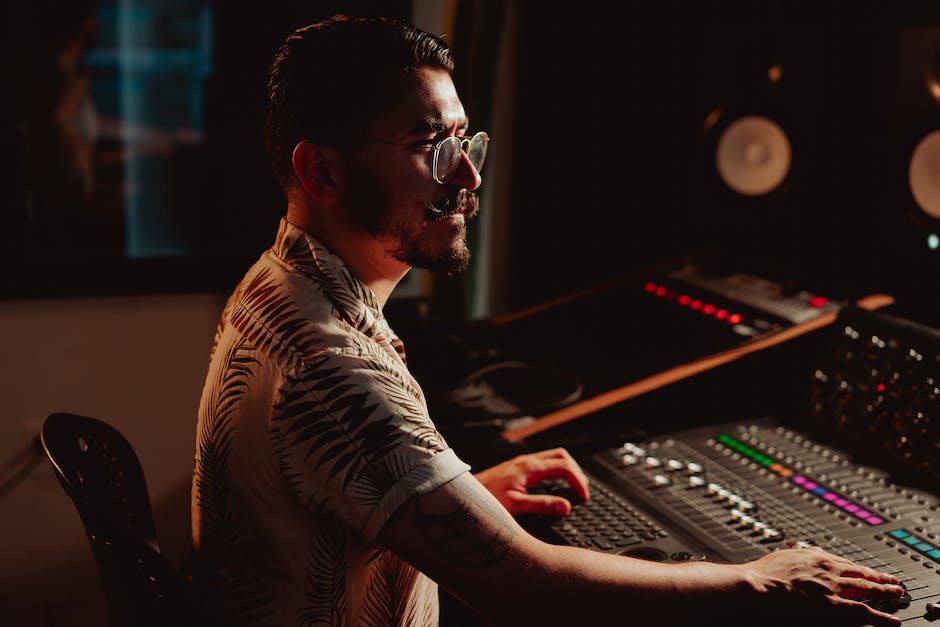
The sounds that echo from a speaker or dance in our earbuds are the result of meticulous post-production. Every level tweak or EQ adjustment is an artistic stroke, subtly shaping our auditory experience. A well-executed post-production can amplify the emotional intensity of a song, spotlight an artist’s talent, and even shape public perception. But conversely, substandard mixing and mastering can distort an artist’s intended message. Thus, we should appreciate the potent influence of post-production, dissecting the science behind the sounds we love and understanding the pivotal role of post-production in our overall musical enjoyment.
Hit us up for recording studios in Chicago at Studio 11!
Stepping into the world of music production always comes with an introduction to myriad terms and procedures, one of which is the term ‘overdubbing.’ Bridging the beautiful chaos of creativity and the discipline of technology, the principle of overdubbing fundamentally transforms the concept of sound production. Overdubbing refers to the technique where sounds are recorded on top of existing tracks, effectively creating layers that augment the aural output. It’s a quintessential element in modern music-making, influencing several genres spanning from pop to jazz and electronic to rock, underscoring its universality in crafting auditory masterpieces. Regardless of being a musician trying to grasp the process’s technicalities or just an avid music lover wishing to understand the intricacies behind your favorite tunes, it’s essential to explore this remarkable procedure that sculpted the trajectory of music over the years.
Understanding the Concept of Overdubbing
In the frenzied heart and soulful rhythm of modern music production, there lies an unsung hero: the technique known as overdubbing. We throw a spotlight on this crucial layer of creative brilliance, resonating behind every note and chord, every pulse, and beat that leaves a pair of studio speakers. Overdubbing – an irrefutable cornerstone – subtly yet significantly shapes and tailors the symphony of today’s music in ways that may astound even the seasoned audiophile.
The melody of overdubbing first rang out in the mid-twentieth century, notably amplified by visionary musicians like Les Paul who saw beyond the existing tapestry of sound. But what’s the mechanics behind the music? Quite simply, overdubbing is the practice of recording an additional part onto an already-existing track. It’s about adding layers, enhancing resonance, and enriching the depth of a song without disrupting its core essence. It’s akin to sculpting a sonic masterpiece, chiseling, refining, and polishing until every detail sings in perfect harmony.
Overdubbing‘s essence pulses in all genres, wrapping a raw, repetitive rock riff with layers of richness, expanding folk harmonies into resonant choral echoes, or deepening electronic lines into pulsating, dimensional beats. Whether subtly cementing a track’s foundation or boldly pushing the linear envelope into polyphonic dimensions, overdubbing creates richer, fuller, and more immersive soundscapes for the listener.
So, why does overdubbing wield such a significant baton in the orchestra of modern music production? It’s in its audacious flexibility, the boundless opportunity it presents for musical craftsmanship. For artists who are seeking the ultimate expression of their creativity, it provides an extraordinary palette to paint sonic portraits of ever-increasing complexity.
Simply put, overdubbing enables endless tweaking and experimenting to capture that elusive “perfect sound”. Vocals can soar above the clouds, guitars can roar like thunder, and even the whisper of a brushed cymbal can resonate like the end of an echoed hall. This enhancement of musical elements leads to tracks that resonate more profoundly with the listener, evoking potent emotional responses and unforgettable concert experiences.
For those who are setting their own stages in budding home studios, mastering the art of overdubbing can inject their music with a professional edge. It’s a musical must-have: the musician’s toolkit is simply incomplete without this influential instrument.
With the advent and evolution of digital audio workstations, overdubbing now sits at the fingertips of innovative creators worldwide. This ease of accessibility means that the symphony of the post-modern era is the most diverse, vibrant and tunefully abundant yet. Spiraling harmonies, intricate solos, and counterpoint conversations dance on the sonic canvas of, and in between, beats, and they all whisper the hidden tale of this cornerstone technique.
Indelibly etched in every genre, from the thumping electronica beats to soulful, raw blues, overdubbing unites us in a shared musical journey. It’s the chameleon and the champion of the modern music era. It’s the secret ingredient – an ode to overdubbing – that creates the palette for the colorful masterpiece we know and love as the world of music, breathing unforgettable life into every bar, every note. Overdubbing is an unsung hero no more, but a vibrant protagonist in the ongoing symphony of sounds, spinning around the turntables of the world.
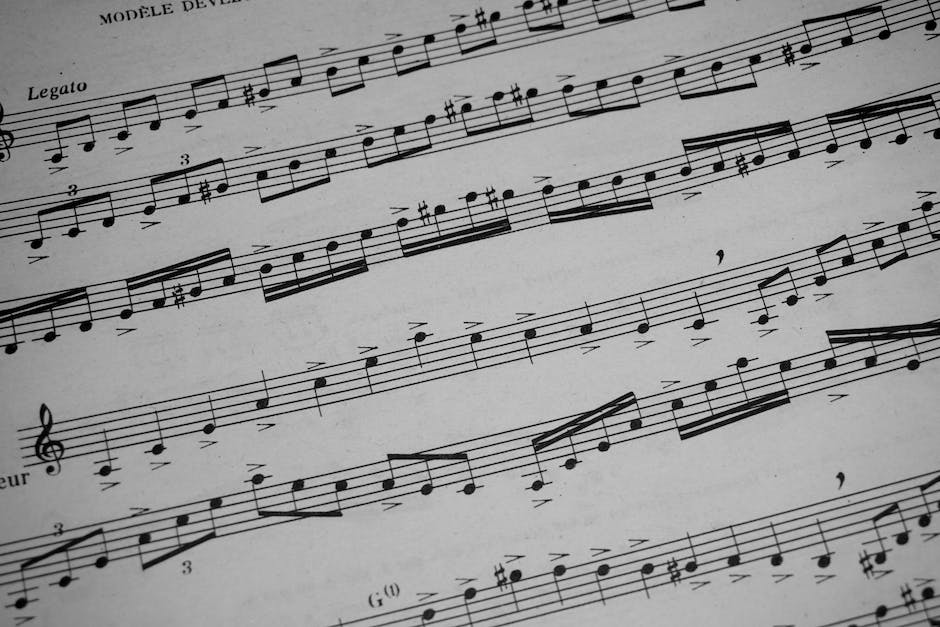
Historical Evolution of Overdubbing
Overdubbing: A Paradigm Shift in Music Production
Often perceived as a seismic shift in the world of music production, the evolution of overdubbing moved beyond the pioneer contributions of artists like Les Paul. From its inception, overdubbing opened a new vista for musicians, totally revolutionizing the creative process, and metamorphosing music from simply recording performances to crafting sonic landscapes.
The Journey Of Overdubbing: Era of The Multitrack Revelations
Although overdubbing has existed in some form or another since the 1920s, the true innovation came in the 1950s with the advent of multitrack recording. Pioneers like Les Paul seized this opportunity and began exploring music in a manner akin to how a master painter would approach a canvas. It was an era of a paradigm shift, where sound transitioned from being purely representational to becoming transformative.
Inevitably, the seminal concept of overdubbing found its purpose and application across a plethora of music genres, from the intense bursts of punk rock to the multidimensional cosmos of progressive rock. It has lent its flexibility to the heartfelt twangs of country music, with quintessential contributions visible in tracks like Patsy Cline’s “Crazy”, and beautifully intertwined in the psychedelic era of rock, embracing the sonic explorations of The Beatles’ “Sgt. Pepper’s Lonely Hearts Club Band”.
Changing Dynamics: Overdubbing and Home Studios
Overdubbing didn’t just redefine the creative process, it ushered in an era of independence for musicians, especially with the widespread accessibility of digital audio workstations. Suddenly, musicians and producers had the tools to redefine the soundscape of their music without constraints or dependence on high-end recording studios. From the young artist in a bedroom studio to a seasoned band in a professional setup, everyone had access to this transformative technique.
The Possibilities: Overdubbing’s Rising Crescendo
Overdubbing undoubtedly created a new dimension in music, a diverse, abundant musical Aladdin’s cave that was suddenly discovered. It’s much like an echo that emanates from a gentle ripple, yet awakens an expansive ocean of sounds. From textural percussive elements from one corner of the globe, intertwined with complex harmonies from another, the beauty of overdubbing lies in its ability to bathe music in colors unthought of, making it a testament to the unifying power of music.
Overdubbing: The Heartbeat of Iconic Music
Every music lover can recount a melody, a tune, or a song that has anchored itself in their hearts and seems to pulsate with every beat. More often than not, such captivating music is a product of masterful overdubbing. It has the power to transform a listener’s experience, evoking a visceral reaction and emotional response.
Passion, precision, creativity, and innovation are at the core of this transformative technique. As the crafting wand of music continues to wave, the influence of overdubbing remains vibrant, vital, and at the heart of music creation, and it promises to continue redefining the very core of music itself. The influence of overdubbing on the auditory palette is beyond compare, and it is this essence that underscores the significance of mastering it, making it an indispensable element in any musician’s toolbox.
Eloquent and omnipresent, overdubbing isn’t just a technique, it’s an echo of the celebration of the diverse realms of music, a mirror to the soul of sound and proof of the endless possibilities in the fascinating universe of music.
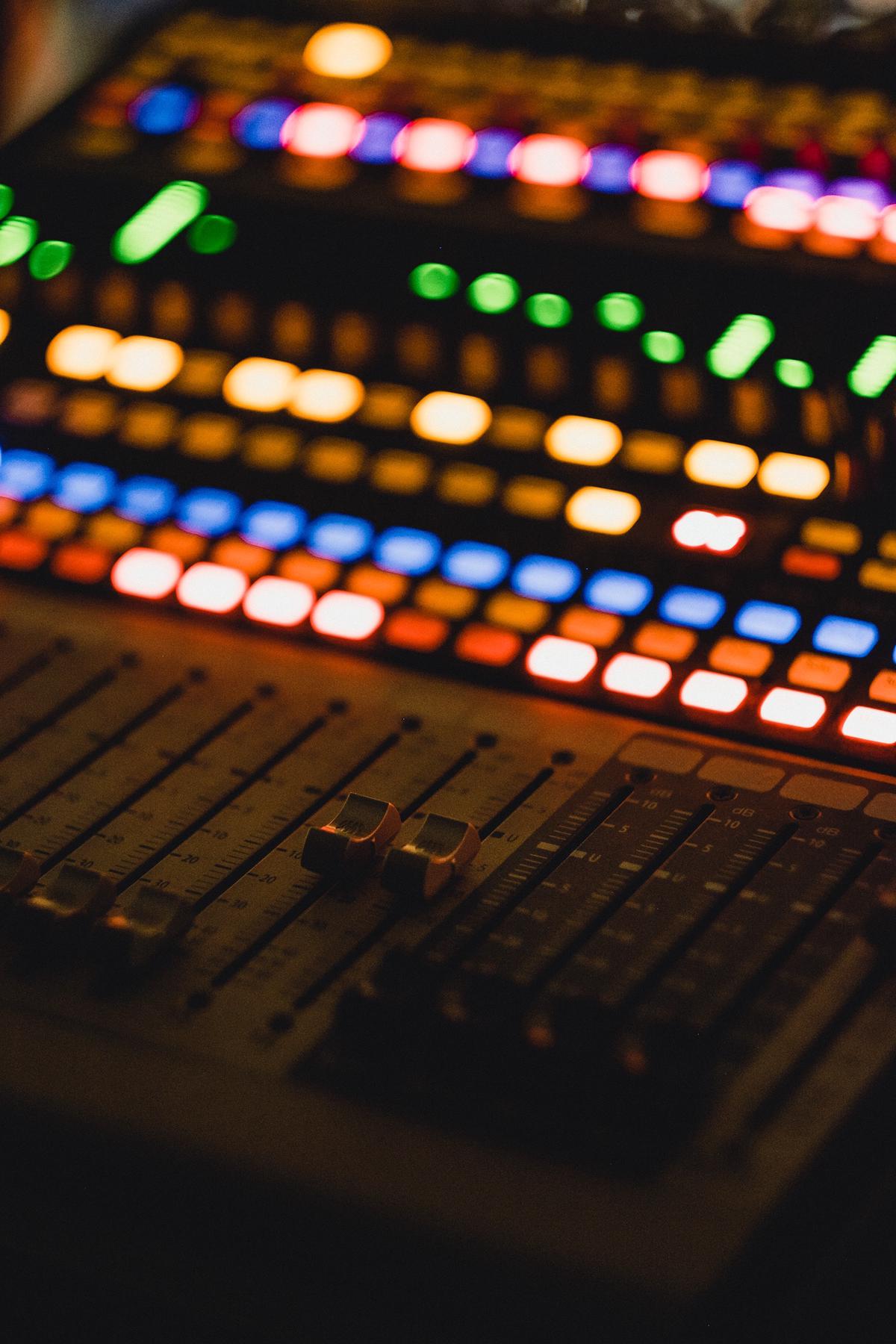
Photo by sasotusar on Unsplash
Technical Aspects and Procedures of Overdubbing
Unraveling the Technical Intricacies of Overdubbing
Overdubbing in music is not merely a tool; it is an exercise in sonic artistry, transcending the lines between science and music. Stripped to its core, the technical process involves adding layers of sounds to a pre-existing recording, but diving deeper, we find the rationale and psychology heavily influencing each strategic application.
A miscellany of sounds would merely create cacophony, but thanks to the guiding hand of an experienced engineer or producer, overdubbing morphs it into a symphony, harmonizing the addition of each new layer. Generally, overdubbing mandates a multi-track recorder; musical tracks can be recorded and played back independently, easing the process of editing or augmenting individual elements without manipulating other parts. This enables the separation of each instrumental and vocal layer—a melody caressed by a lone guitar, a vocalist’s rising crescendo, a punctuating drum beat, each offering its unique narrative to the overall composition.
The essence of overdubbing lies in its manifold applications. Traditional layer-by-layer recording enables musicians to add harmonies or intricate details that completely shift the feeling of a piece. However, it’s not constrained to such applications alone. Adventurous artists dispense with spontaneous, on-the-spot overdubbing! Dubbed as ‘live overdubbing’, this format plunges the artist into an ocean of uncertainty, churning out riveting performances that bear a raw, unscripted authenticity dripping with emotional sincerity.
Another unique tenet of overdubbing is ‘punch-ins’. A technique particularly alluring for perfectionists that lets them re-record specific segments of a track, without disturbing other portions. Gracefully dancing between the realms of correction and creativity, punch-ins may serve as a saving grace to rectify a pesky error or to infuse an extra dash of inspired brilliance.
Finally, let’s dip our toes into the fascinating paradigm of ‘looping’. This repetitive application of overdubbing crafts mesmerizing musical patterns, blatantly defying the conventional rules of composition. Instead of curating a linear pathway, looping playfully gambols in musical circles, ensnaring listeners in a hypnotic trance that celebrates the power of repetition.
Indeed, overdubbing’s technical foundations are sturdily erected on the tools, granting musicians an exhilarating leeway of innovation. At the same time, it’s vital to underscore that these gears are mere vehicles – the strength, beauty, and vitality of overdubbing originates from the human mind and heart, etching an indelible mark in our auditory realm. Through overdubbing, a world of enriched sonic expression unfolds where the boundaries of imagination are constantly pushed, providing that much-needed spice that keeps our musical world astoundingly dynamic.
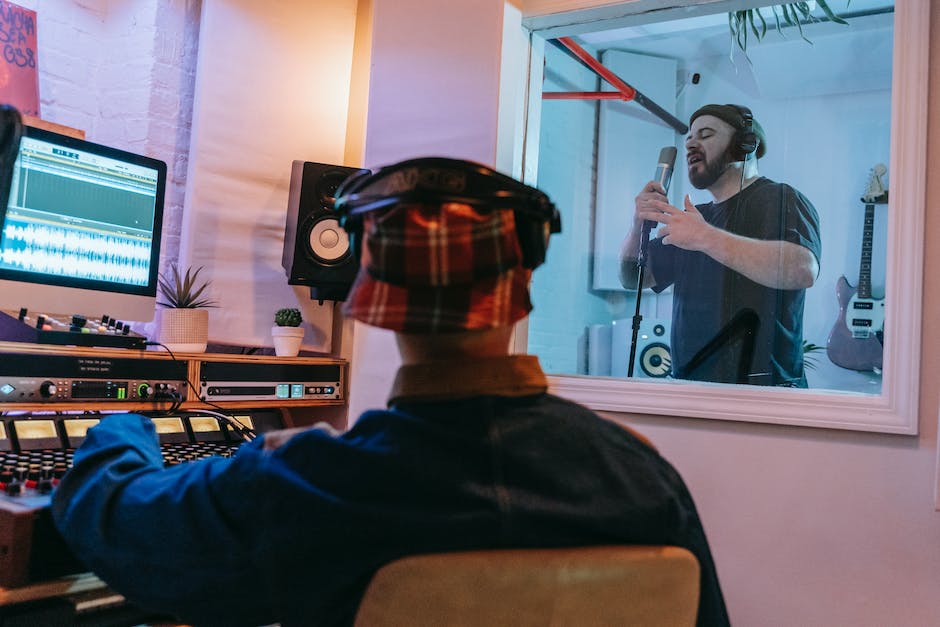
Influence and Impact of Overdubbing
Diving deeper into the world of overdubbing, we find ourselves submerged in a rich soundscape teeming with intricate layers invisible to the casual observer but known well by the dedicated audiophile. Overdubbing has revolutionized the scope and depth of music production, continually pushing the boundaries of the possible, and it transforms the industry and thrills listeners worldwide.
Anyone who has worn out a favorite album, humming along to tracks tinged with the complexity an experienced engineer or producer can introduce via these techniques, recognizes the profound dynamism pairings of instrumental-with-vocal tracks yield.
Separating the instrumentals and vocals is an essential facet of overdubbing. When striking chords resonate perfectly with a singer’s voice in a harmony, remember that this spellbinding synchronization is likely the result of meticulous, layered recording. The practiced hands of a sound engineer curate this journey, guiding listeners through uncharted timbered terrains, where separating elements can coalesce into an exceptional unity. This approach opens up astronomical degrees of creative flexibility, enabling the crafting of sonic tapestries unheard of before the advent of overdubbing.
Taking a less conventional route, “live overdubbing” presents a dauntless authenticity, akin to being engrossed within the charismatic pull of a stage performance. This technique can sometimes carry imperfections or technical slips, but they’re accepted and even adored for making the music relatable and real.
Digging deeper, a myriad of artists have embraced the punch-in technique. This method dishes out a second chance to musicians, offering them the opportunity to flawlessly retake particular sections of a track. Such refinement, powered by punch-ins, can illuminate the music industry’s authenticity, weaving a tapestry of dedication and craftsmanship that reverberates throughout iconic tracks. Imagine the nuanced expressions an artist can sew onto the texture of their music with such a tool!
Among the pantheon of overdubbing techniques lies looping, a paradigm that defies traditional musical composition rules. Loops offer a repetitive spin to overdubbing, enriching sound with a mesmerizing déjà vu. This rhythmic repetition nourishes a unique auditory experience, enticing listeners to dive deeper into the melody’s hypnotic core.
Behind the cascading layers and polished re-recordings, the heart and the hand of the human remains integral to overdubbing. Technical tools are merely the vehicles, but the destination – the enchanting symphony – is the zenith of human creativity, driven by profound emotion and boundless imagination.
Embracing overdubbing is, indeed, an expedition into enriched sonic expression. It is a relentless tide ceaselessly stretching the limits of musical possibilities. A captivating dialogue between the melody and the method, between the artist and their artistry, between creativity and the boundaries it nudges to grow. This exploration into the fascinating world of overdubbing is a testament to Music itself – an infinite field of exploration and innovation, guided by the torch of human creativity.
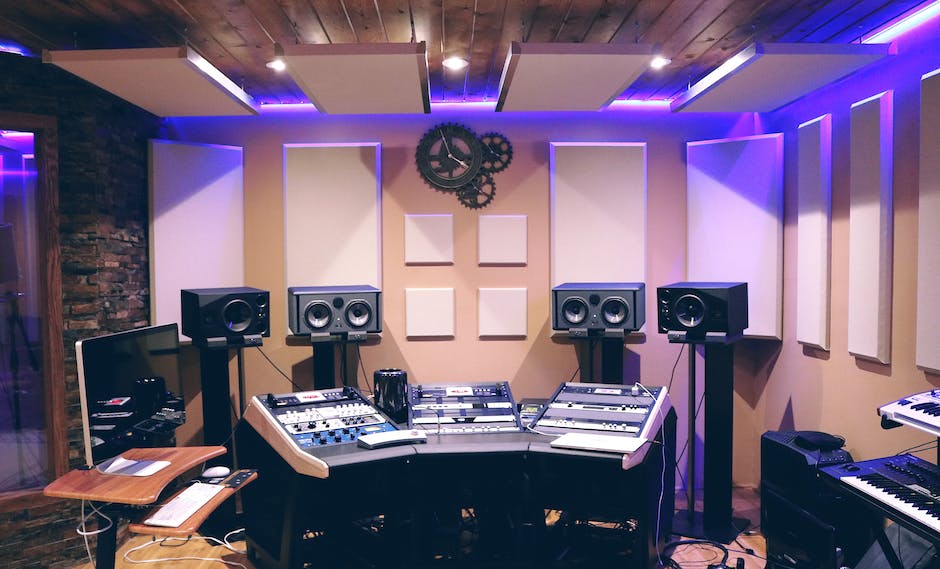
Through the lens of history, technology, and influence, overdubbing emerges not just as a process but a powerful tool, a catalyst enabling musicians to paint their sonic canvas, transcending limitations and challenging traditional norms. As listeners, understanding overdubbing provides a new perspective in appreciating the rich texture and emotive power of the songs we love. Meanwhile, for aspiring musical artists, knowledge of overdubbing technique can be a liberating pathway, creating a unique blend and sophistication in their compositions. As we listen to the symphony of the world around us, let the understanding of overdubbing resonate within us, enhancing our shared language – the universal language of music.
It is undeniable that drums form the heartbeat of any form of music, providing rhythm and energy. Mastering the art of recording those killer drum punches that reverberate in your soul and ignite your senses, however, is a science in itself. This journey navigates through understanding the drum recording environment, ideal selection, and setup of equipment, the nitty-gritty of microphone placement and drum tuning techniques, the role of mixing and editing in achieving the perfect drum punch. We will also delve into acknowledging common mistakes encountered in drum recording, essentially contributing valuable knowledge to that dream in every musician’s heart – the perfect drum recording.
Understanding the Drum Recording Environment
Striking the Right Note: Essential Factors in Creating an Optimal Drum Recording Environment
The symphonic cacophony brought forth by beating drumheads is a vibrant language all its own, a pulsating heart at the core of every spectacular music composition. From thunderous, heart-jolting explosions to soft, whispering rustles that tiptoe in the backdrop, drums have a magic that is indeed one-of-a-kind. Capturing that magic, however, isn’t a job for the faint-hearted. It’s an intricate dance where several elements commingle, making sure that the pounding roar of each drum strike stands out with pristine clarity.
First and foremost, the metamorphosis of an ordinary room into an optimal drum recording environment begins with the drum kit itself. Good quality drums, complete with detailed tuning, are quintessential to achieve the desired timbre and pitch. The drumhead’s tension, the stick’s touch, the room’s resonance – every minute detail adds to the overall sound, creating a symphony of beats.
Beyond the drum kit lie two essentials in imparting life to the rhythm – microphones and their position. The choice of microphones could be as varied as the tunes themselves, with some swaying towards dynamic mics for robust, vivacious beats and others preferring ribbon mics for capturing a more delicate, softer touch. Then comes the art of positioning. An intimate dance ensues between microphones and drums, each positioning and repositioning until they find their perfect spot, the place where each drum sound comes alive in full vibrancy.
Stepping into the realm of acoustic treatment, it’s a world that lays the groundwork to capture the drum’s heart-stirring rhythm. Absorbers, diffusers, bass traps – each element in this territory has a role to play. A well-placed absorber can restrain overly resonant beats while a thoughtfully deployed diffuser will scatter sound waves, thus preventing unwanted echoes. Bass traps, on the other hand, aim to tame low-frequency sound, ensuring the rhythms don’t overpower but complement other beats.
Then lies another critical aspect, often overlooked yet highly influential – the drum room’s size and shape. Spaces carry distinctive personalities, something which lends a unique touch to the recording. Ceilings, walls, flooring – each plane has its sonic characteristics, with tall ceilings typically fostering a booming resonance and reflective surfaces adding an unexpected echo.
Lastly, the crucial role of the recording engineer cannot be overstated. This maestro plays the invisible hand that melds all the pieces together, fostering balance between rhythm and resonance. An expertly skilled engineer will massage the drum sounds, secure flawless mic placements, and remain alert for any anomalies, ensuring that the drum’s primal roar stands out but doesn’t overshadow.
In conclusion, curating an optimal drum recording environment is an intimate tango between art and science. It’s a harmonious symphony of various factors – the right equipment, the ideal music room, precise microphone placement, meticulous room treatment, and an adept engineer poised to capture the striking rhythm. Each piece contributing to a grand tapestry where music tells its engaging stories—and the pounding heart of the drum resonates just right.

Selection and Setup of Drum Recording Equipment
When it comes to the symphony of a studio recording session, the lead vocalist may take center stage, but nobody drums up excitement quite like the percussive drum kit. Let’s delve deeper into this harmonious world and highlight the remaining key equipment required for top-notch drum recording. We will also touch upon the best ways to orchestrate their setup to create perfect symphony and resonance.
After ensuring a fine-tuned drum kit and a meticulously mic’d setup, the next crucial piece of equipment to consider is the preamplifier. A microphone preamplifier, or preamp, works as a mediator between the microphone and the recording interface. When the microphone captures the resonant beats of the drum and transforms them into electrical signals, those signals are incredibly delicate. A preamp takes on the role of the maestro, amping up these signals to a level where they can be smoothly interpreted and recorded by the audio interface. Quality preamps produce a warm, rich sound that maintains the crispness of each drum impact.
Speaking of the audio interface, this integral tool is where the magic truly happens. The beating heart of your setup, the audio interface converts those amplified electrical signals from analog into a digital format suitable for a computer to process. This digital format is where the producer and mixing engineer can sculpt and mold your rhythms into the musical masterpiece it was meant to be. In an era where digital technology reigns supreme, investing in a high-quality audio interface is non-negotiable for world-class drum recording.
Next, we look at the significance of one of the unsung heroes in the recording studio – the headphone. For a drummer, the headphone presents the metronomic pulse and the performance of the rest of the band. This assists them in staying in time and blending seamlessly into the rhythmic structure of the song. Comfort, high isolation, and good audio quality are the recipe for the best studio headphones.
Setting up these vital gears for drum recording necessitates great care. The placement of the preamp and audio interface should ideally be close to the mixer and the computer for easy access and streamlined workflow. The drummer’s headphones should also be connected to an extension cable to ensure mobility while performing.
Last but not least, high-quality cables are required to interconnect all these pieces of gear. Premium cables contribute to minimal signal loss and reduced interference, resulting in pure, unadulterated drum sounds in your recordings.
So, is drum recording an intricate art demanding a medley of key equipment and mastery over their positioning? Absolutely, but with the right gear and thoughtful setup, you, too, can hit all the right notes and create a beat worth dancing to.
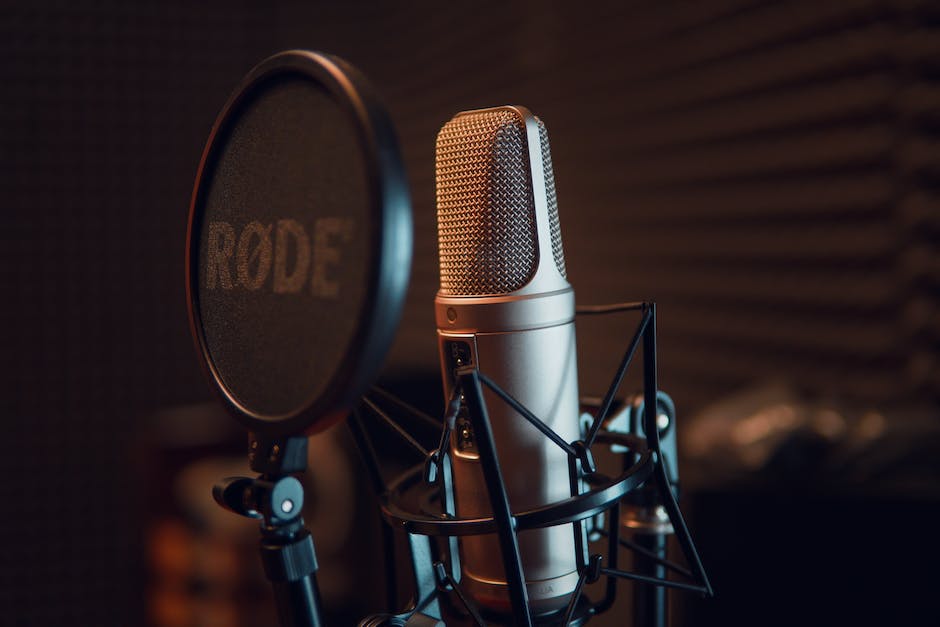
Techniques for Mic Placement and Tuning Drums
In the audacious, multisensory world of music, capturing the rhythm and resonance of the drums is an art form all its own, a dance of sound and silence punctuated by the percussive heartbeat of the melody. This dance is fundamentally shaped by two key elements: microphone placement and drum tuning, whose nuanced interplay deeply affects the quality of drum recording.
As the vivacious pulse of the composition, the drum deserves immense consideration. The rhythmic cadence is determined not only by the skill of the drummer, but inescapably by how well the drum itself is tuned. Juxtapose an untuned kit with a meticulously harmonized one, and it’s akin to comparing rough sketches with a masterful, vibrant painting. Tuning impacts the pitch, tone and overall soul of the drum’s sound in profound ways. A subtle tightening or loosening of the drum head can transform a flat note into a robust, rounded sonic boom that reverberates with full, resonant strength.
The role of the drum-tuning artist can, thus, never be overstated. Their hands are the conduit through which the drum’s voice is fine-tuned and shaped, their decisions directly influencing how the drum will respond to each strike. Precise tuning ensures accurate tone production, respects the spectrum of higher and lower frequencies, and accentuates the harmonics of each drum, all of which contribute to a more refined and dynamic recording.
While drums sing on their song, microphones are the attentive audience, absorbing every nuance, every timbre, every embodiment of resonance. Their placement around the drum kit is the quintessence of music production, but it’s no random deed. It requires sensitive comprehension of the acoustic character of the drum kit, combined with an understanding of how sound radiates in various directions from different parts of the kit.
Subject to the specific drum, genre, and desired tone, the microphone placement will differ, each location capturing a distinctive aspect of the drum’s character. To highlight the percussive attack of the drum, a microphone can be directed towards the drum’s head. To capture more harmonic undertones and resonance, the microphone may be tilted towards the drum’s shell. The specifics may vary, but the objective remains unvarying: to create a tonally balanced recording in which the drums don’t just play, they speak.
Deploying multiple microphones can add depth and dimensionality, mirroring the diverse tonal landscape of the drum kit. Front-of-kit mics for an overall perspective, spot mics for granular detail, overhead mics for cymbals and ambient noise- each positioned thoughtfully contributes to the sonic tapestry of the recording. This strategic placement ensures that varying frequencies are harnessed, and the sonic panorama of the drum kit is harmoniously recorded, delivering the warmth, depth and rousing power that a drum can provide.
In the symphony of music production, it is clear that the subtleties of drum tuning and microphone placement, while somewhat invisible to the listener, are intrinsic to creating a recording that brims with life. They’re the unsung heroes, the cornerstone of a compelling drum recording, be it solitary or within a grand orchestral ensemble. The understanding and implementation of these two critical elements, therefore, can elevate a drum recording from mundane to magical. Nurturing the auditory relationship they share is not an option, but a necessity for the passionate pursuit of quality drum recording.

The Role of Mixing and Editing in Drum Recording
Building off the already profound dynamics in drum recording, let us delve into the artistry of mixing and editing – an often-unsung hero in achieving the perfect punch, crisping the crackling hits and smoothing out the rumbling toms. This intricate process is akin to making a great dish where each ingredient must come together flawlessly to get the perfect taste.
Mixing is a subtle science. It involves bringing the recorded drum tracks together and levelling them out, letting the individual timbre and tone of each drum and cymbal shine through while maintaining a profound coordination. It’s multi-faceted and it’s critical.
Begin with audacious panning. This magic tool can situate the drum sounds, imitating the perception of standing before a live kit. The fascinating hi-hats might be placed slightly to the left, the vigorous snare centered, and the mighty kicks balanced uniformly. Multiple-tom sets might be spread out, simulating the sensation of traveling sounds. It’s a panoramic symphony right within the depth of your headphones.
Let’s consider EQ (equalization). This can cleanse the drum tracks, ensuring the piquancy of sound sticks right where it should. It can reduce unbalancing frequencies that eat into the clarity and emphasize the commanding ones that create punch. EQ can round out the kick drum, adding warmth, or sharpness to the snare. Overtones and undertones, may let the highs soar or lows rumble — it’s all about balance.
Then comes compression, the game changer. Compression can transform a drum recording from good to great, giving it the requisite punch. It controls the dynamic range, the subtle difference between the loudest and softest audio levels. It can tighten the kicks, add attack to the snare, and bring power to the toms, yielding a stunning, crisp resonance. It’s like painting with sound, bringing out the texture and depth of the drum parts.
Now, some prefer the delicate subtlety of reverb to add a spatial aura around the drums, placing them in a virtual ‘room’. The cavernous boom of a huge hall or the tight slap-back of a small studio – each imparts a fresh flavour, depth, and character to the sound.
Finally, editing – a nuanced task demanding an artistic temperament coupled with technical proficiency. Gritty drum hits may need to be tightened or moved to match the rhythm, maintaining a seamless groove. Crossfades can be employed to smoothen transitions between cuts, making it sound like one cohesive performance, even if it was several parts stitched together.
Mixing and editing are the last crucial stages of drum recording, finessing the raw, robust beauty into a polished, powerful masterpiece. No drum part stands alone, and it is through this process that their collective rhythm and resonance reach full harmony. This orchestrated command of technology and artistry can bring forth the punch in drum recording that thrills the audience, breathes life into a track, and resonates far beyond the studio. The power to evoke emotion, trigger memories, and unite people, that’s the ultimatum of music. It’s imperative to respect, appreciate, and master this artistry of mixing and editing – it is, after all, where science meets soul.
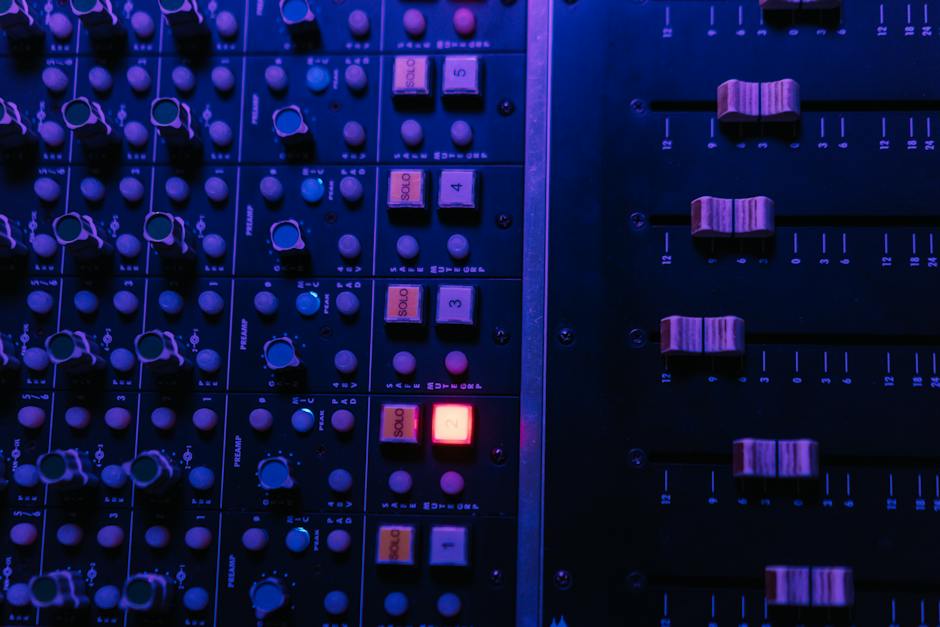
Common Drum Recording Mistakes and How to Avoid Them
Rowdy Thunder: The Art of Drum Recording Mistakes and How to Dodge Them
Astoundingly enough, the drumming realm is rife with sonic pitfalls that can turn a passionate beat into a lackluster rhythm unfit for even the most generous ear. It’s no secret—an ensemble without a potent drum sound is akin to a songbird without a warble. Thus, mastering the art of recording drums is as essential as the heart pumping life to the body.
Despite musicians acing the more apparent elements of drum recording— from selecting an exquisite drum kit, mastering tuning intricacies, establishing harmonic resonance to purposefully placing microphones— there are labyrinthine detours they often overlook. A shift in focus towards these overlooked aspects, such as audacious panning techniques and equalization, may seem trivial but pack quite a punch in refining the overall drum sound.
Be it the rolling storm of a rock concert or the nimble pitter-patter of a jazz club, the drummer’s presence is evoked through the speakers to listeners far and wide. What then, might you ponder, can reproduce such a haptic sonic experience in a recording? Enter the realm of audacious panning techniques, an often overlooked superstar in the drum recording domain. A common misstep lies in being overly conservative with panning, leaving the drum track flat and lacking dimension. However, an imaginative pan— sending the snare slightly left, nudging the floor tom little to the right— can have the uncanny ability to transport listeners right in front of a live drum kit experience.
Diving into the nitty-gritty, musicians often leave the equalization (EQ) to the wind and end up with drum tracks sounding muddier than a rain-soaked music festival. Precise EQing eliminates these conflicting frequencies, allowing each drum element its moment of glory. By judiciously carving out an EQ space for each drum element, muddiness lifts, clarity emerges, and the drum track starts to sing a balanced symphony.
Furthermore, the mistaken fear of compressors often leads musicians to overlook their transformative powers. Just as a spice masterfully added brings out the flavor in a dish, a finely tuned compressor adds punch to the drum track, giving it the gutsiness needed to energize the mix.
Next on the common oversight list is the notorious reverb. An oft-opined myth: ‘drums don’t need a reverb.’ On the contrary, a well-judged reverb can add a spatial aura and depth, transforming a placid beat into an ecstatic pulse reverberating throughout the recording.
Recording drums isn’t just about the recording itself—it’s the journey that follows. Even the most exquisitely recorded drums would be a mere skeleton without the flesh and sinew of attentive editing. By tightening drum hits, adjusting timing, and adding a touch of humanization, musicians can bring a drum machine’s precision and a hand drummer’s soul into harmony, converting raw drum tracks into rhythmically robust spectacles.
Mixing and editing are to drum recording what flour is to bread. They weave together the raw beauty of drum recordings, a delicate dance that defines the beat’s weight and balances the rhythm. Get this wrong, and the beat loses its pulse; it no longer mirrors the throbbing hearts of listeners. The drum track starts to careen down a slippery slope, failing to evoke an emotional response from listeners.
Indeed, the power of music lays not just in the instrumentals or the lyrics—it’s the emotion compelling the bodies to sway, the memories brought back with each note, the unity it fosters amongst the listeners. It’s the way the drumbeats match heartbeats, pulsing emotion and igniting the spirit. Drum recordings, with their immersive beats, hold this power, and with careful avoidance of common pitfalls, musicians can utilize this potential to unite, inspire, and transform.
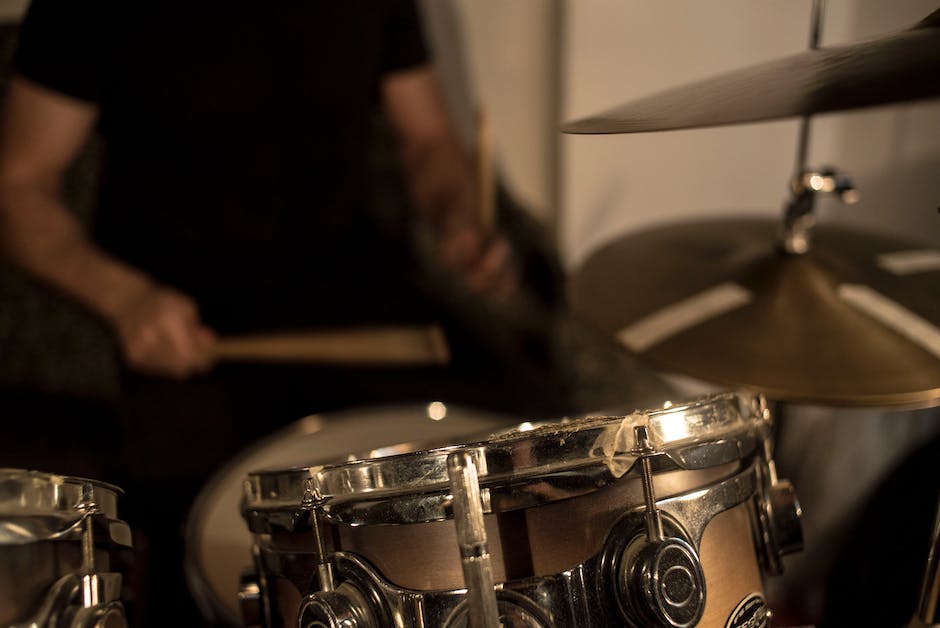
Mastering the art of drum recording, while complex, can be decoded and mastered with understanding, patience, and practice. By diving deep into the recording environment, meticulous equipment setup, strategic microphone placement, skillful drum tuning, and understanding the importance of mixing and editing, we can overcome common pitfalls and challenges. As we refine this craft, we progress closer to capturing that resonating, explosive drum punch, truly embodying the heartbeat of the music we create. After all, the beauty of music lies in its perfection, and achieving that perfect drum recording is nothing short of making sweet, sweet music.
Page 4 of 24 « First ... « 2 3 4 5 6 » ... Last »





















